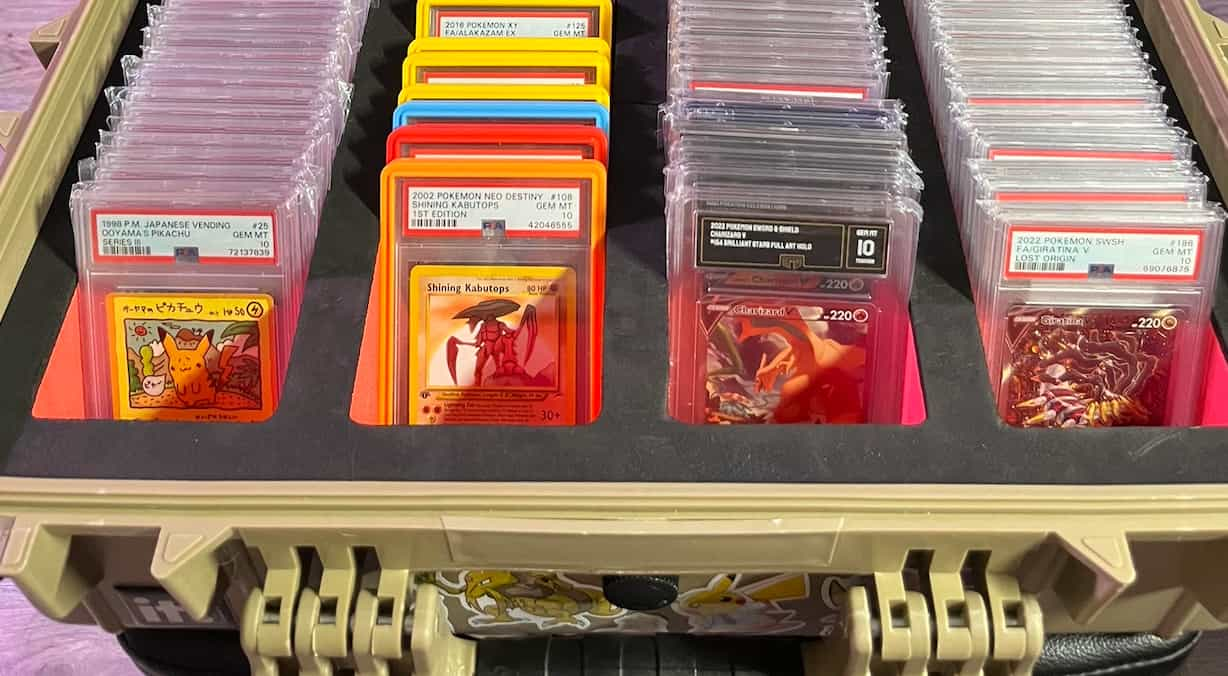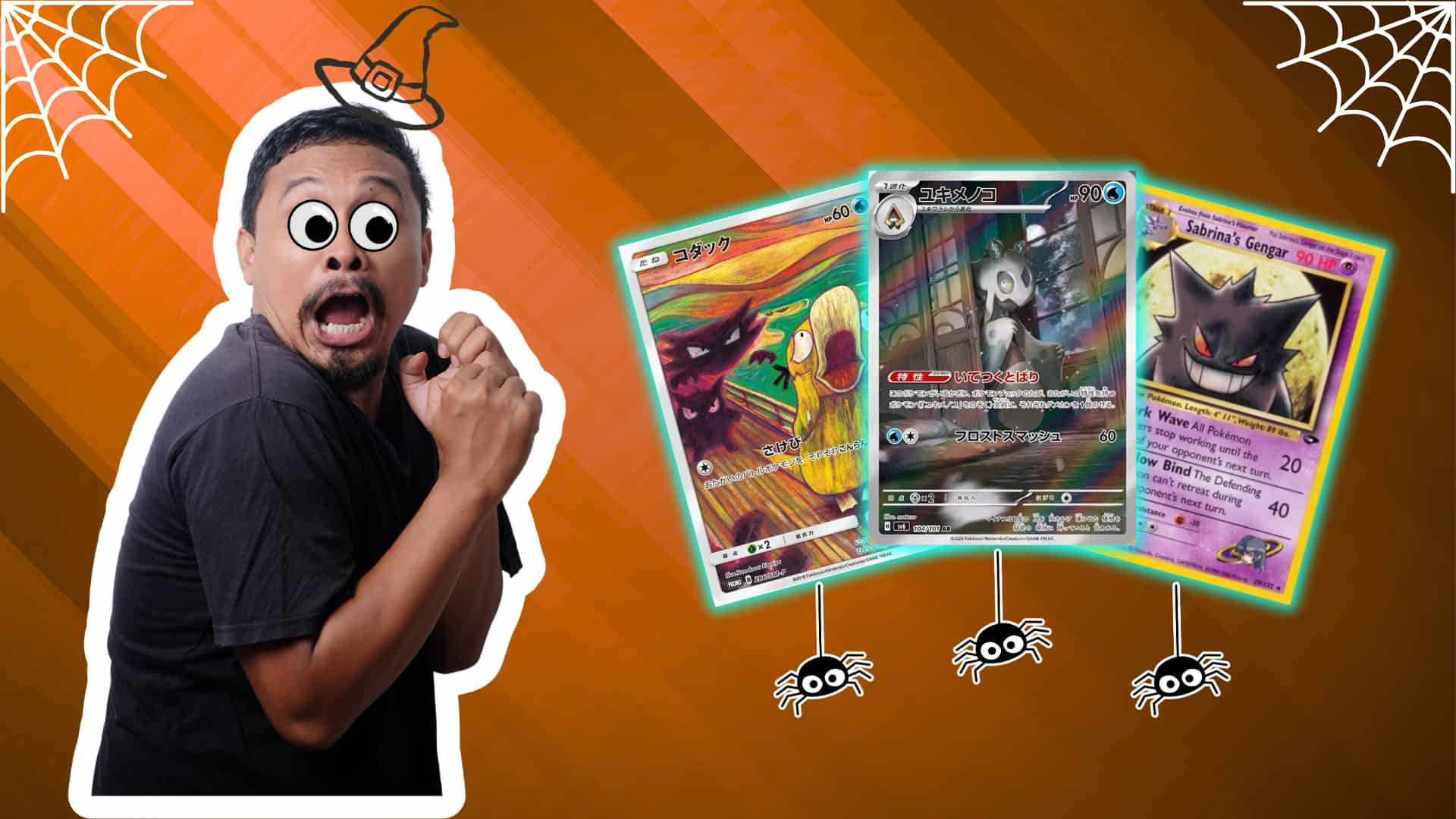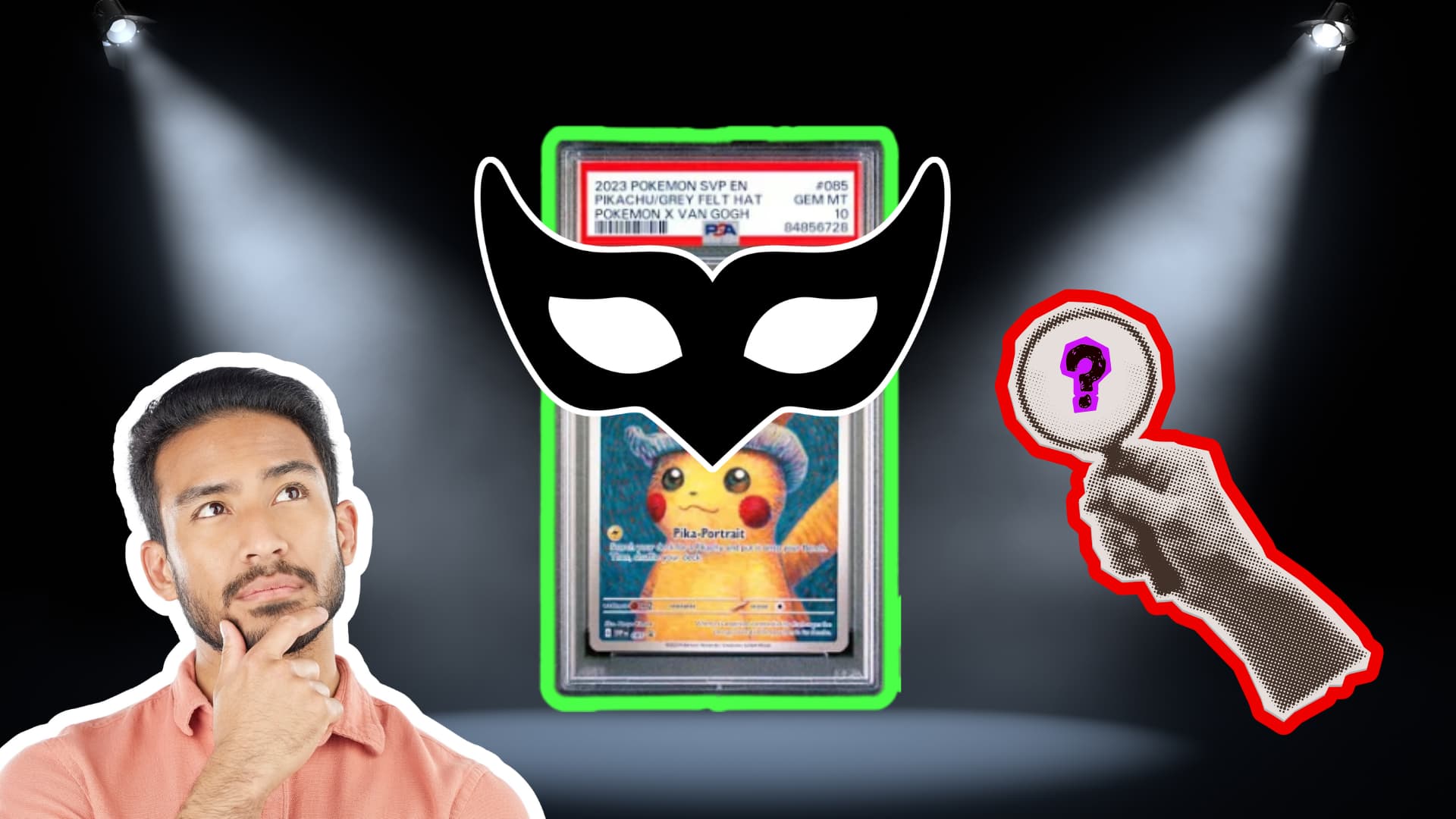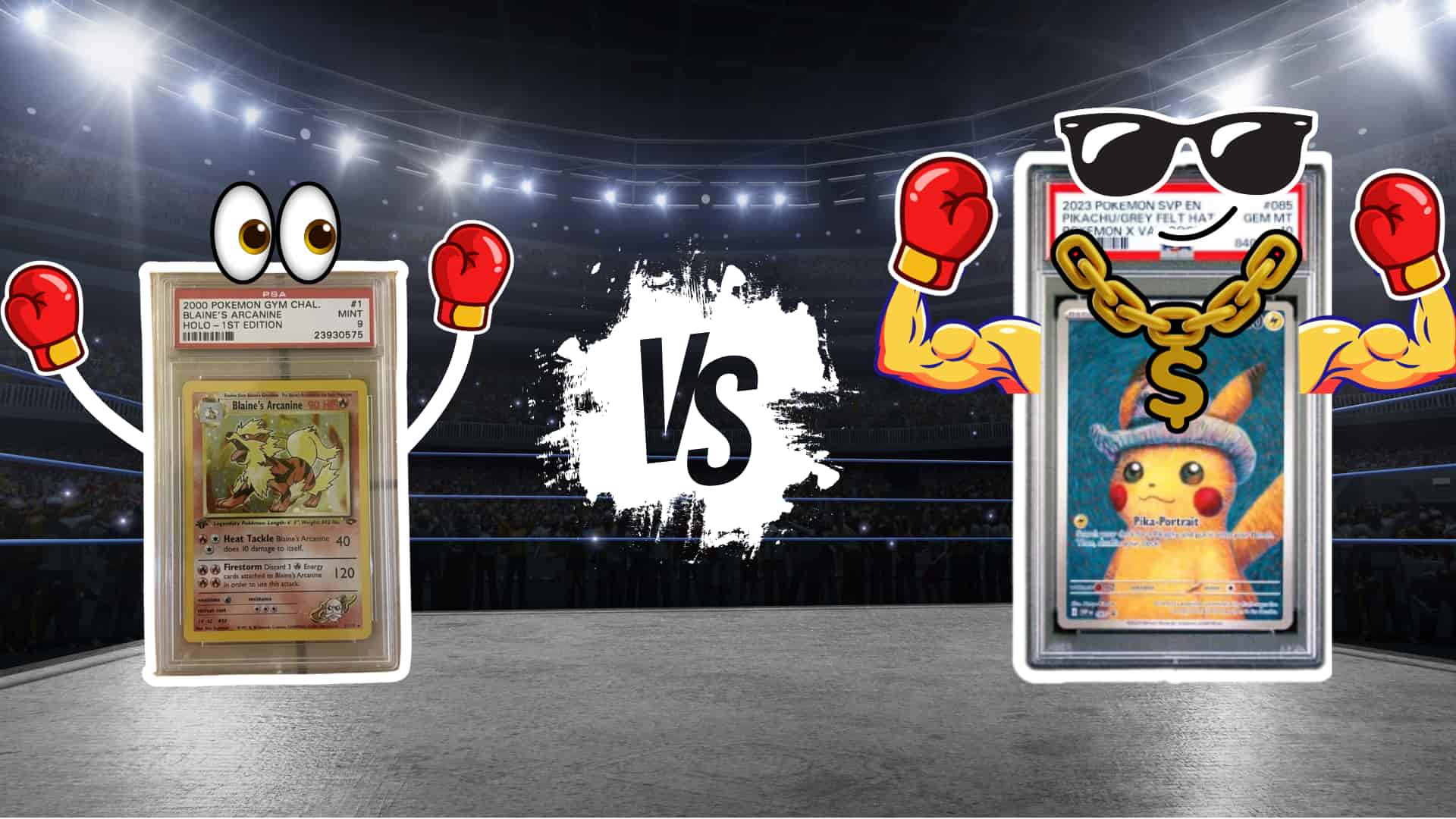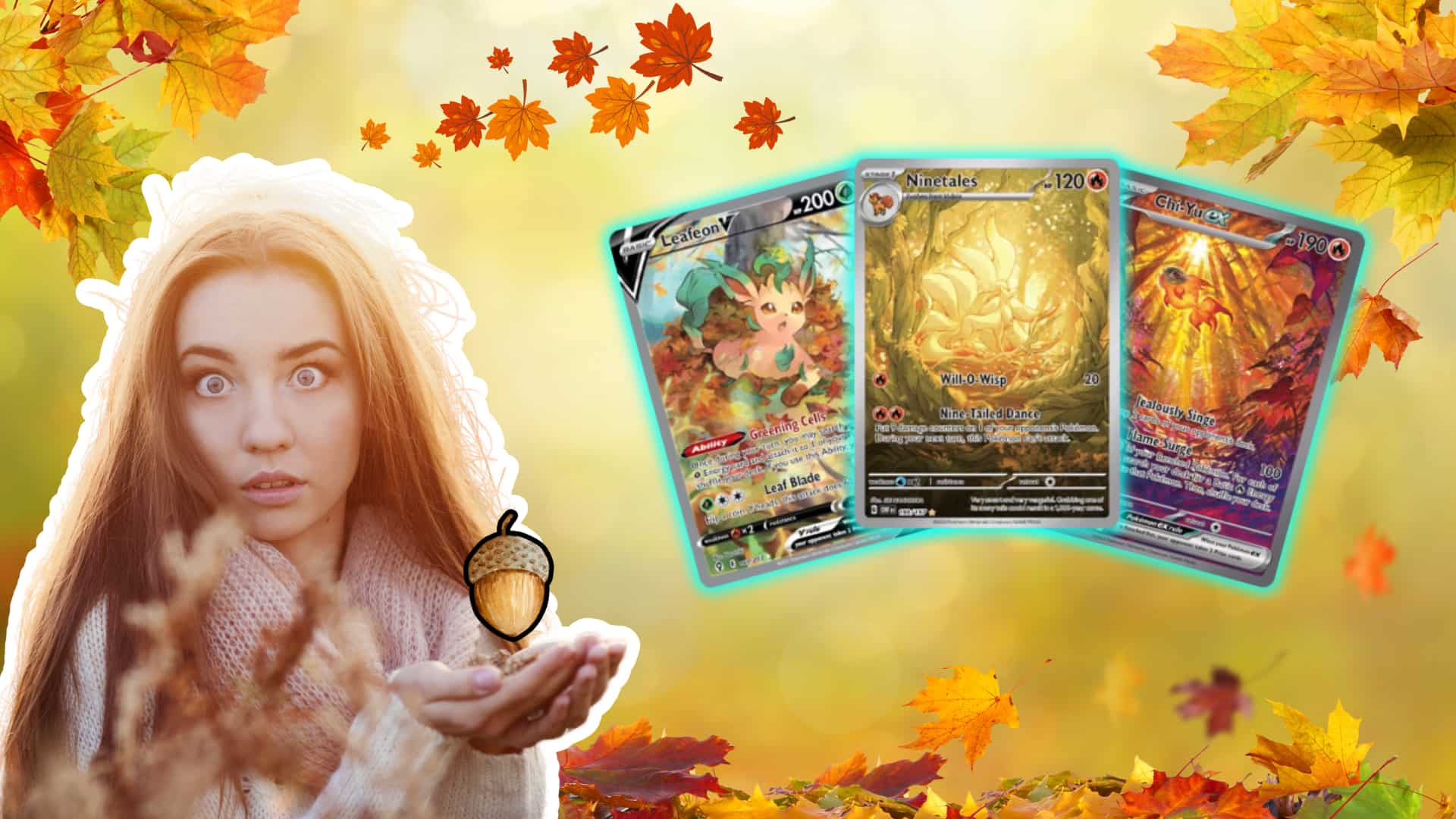We’ve all been there. That heart-stopping, breath-holding moment when you peel back the foil on a fresh pack. The world slows down. You see the glint of texture, the shimmer of a secret rare, or the iconic, nostalgic art of a vintage grail like one of the original shadowless Pokémon cards you’ve hunted for years. You’ve done it. You’ve pulled a banger. After the initial shock and celebration wear off, a critical question settles in: “What do I do with this treasure now?”
This is where the journey truly begins. For any serious collector, the next step involves navigating the complex, often intimidating world of third-party grading. Getting a card professionally graded serves three crucial purposes. First is Authentication, the process of verifying your card is the real deal. Second is Protection, where your card is sonically sealed in a durable, tamper-evident plastic case—a suit of armor against the ravages of time and handling. And third, the one that makes pulses race, is Value Enhancement. A high grade from a reputable company can transform your cardboard treasure into a significant financial asset, unlocking its maximum market potential by capitalizing on what makes a Pokémon card valuable in the first place.
But which company do you trust with your prized possession? The trading card grading landscape is an arena filled with titans, each with a unique fighting style. Think of them as the “Elite Four” of grading: Professional Sports Authenticator (PSA), the long-reigning champion with unparalleled market power; Beckett Grading Services (BGS), the technical specialist known for its meticulous, sub-graded approach; Certified Guaranty Company (CGC), the fast-rising TCG expert that has quickly become a fan favorite; and Sportscard Guaranty Corporation (SGC), the vintage master with a disruptive modern strategy.
And just when you think you have the main players figured out, new challengers enter the ring. Companies like Technical Authentication & Grading (TAG) are leveraging cutting-edge technology and artificial intelligence, promising a future of objective, transparent grading that could change the game entirely.
This guide is your ultimate Pokedex for these grading champions. Let’s go chat!
A Company-by-Company Breakdown
Choosing a grading company is about more than just getting a number on a slab; it’s about aligning with a company’s philosophy, service model, and market position. Let’s break down the “Elite Four” to see what makes each one a formidable contender in the grading gauntlet.
Professional Sports Authenticator (PSA): The Market King
As the oldest and largest grading service, PSA is the undisputed king of the collectibles market, a position that influences every aspect of its operation, from its pricing to its often-frustrating wait times.
Pricing and Service Tiers
PSA operates on a pricing model that reflects its dominance. Their fee structure is tiered, based on the “Max Insured Value” of the card after it has been graded; a concept that ties directly into the broader question of whether you should insure your Pokémon card collection. This system immediately introduces a strategic gamble for the collector. You must estimate your card’s potential future value to select the correct service level. If you aim too low and your card gets a high grade, its market value might exceed your tier’s limit, forcing PSA to “upcharge” you to the appropriate, more expensive tier.
For most collectors, the entry point is through bulk services, but the most affordable options are gated behind a membership. The “TCG Bulk” tier, priced at $18.99 per card for items valued up to $200, and the “Value Bulk” tier at $19.99 per card for items up to $500, are both exclusive to PSA Collectors Club members.
For those unwilling to pay for a membership, the standard “Value” tier costs $24.99 per card for the same $500 maximum value. If you need your card back quickly or are submitting a high-value grail, the costs escalate dramatically. Service levels range from “Value Plus” ($39.99) and “Regular” ($74.99) to the astronomical “Premium” tiers, which can run from $999 to over $9,999 for the hobby’s most elite cards.
Turnaround Times
Herein lies the great PSA paradox: they are the most sought-after grading service, and as a result, they have the longest wait times. Officially, PSA advertises a 65 business day turnaround for its bulk and TCG bulk services and a 45 business day turnaround for its non-member “Value” tier.
However, the on-the-ground reality is often much longer. The company itself admits that the “Total Completion Time” for bulk submissions, from the moment the package arrives at their facility to the moment it’s shipped back, is approximately 4 months. Compounding the frustration, the turnaround clock doesn’t even begin ticking when your package is delivered.
It starts only after PSA has entered the submission into their system—a process called “Order Prep” that can itself take several weeks. Collector forums are filled with anxious posts from submitters waiting three, four, or even more months for their bulk orders to return, a delay that can be financially devastating for those looking to sell a modern card while its market value is at its peak.
Grading Standards and Philosophy
PSA has earned a reputation for being somewhat lenient on centering. In the past, a card could have up to a 60/40 front centering ratio and still achieve the coveted PSA 10 Gem Mint grade, though this has recently been tightened to 55/45. However, where they are generous with centering, they are merciless with surface defects.
A tiny, almost imperceptible print line or a minuscule surface dimple—the kind that is common on modern, mass-produced cards—can be a death sentence, automatically knocking the grade down to a 6. This creates a very specific profile for a perfect PSA submission: a card with a flawless surface is paramount, even if the centering isn’t absolutely perfect. This philosophy contributes to a high “gem rate,” especially for modern TCGs.
In the first half of 2025, an astonishing 50% of TCGs graded by PSA received a Gem Mint 10. This high rate, combined with their massive volume, leads to enormous population reports for modern chase cards, a factor that can impact long-term value.
Key Features and Value Proposition
PSA’s value proposition is built on its unparalleled market power. Their key features are designed to reinforce their status as the industry standard. The PSA Collectors Club not only provides access to cheaper bulk rates but also fosters loyalty.
For high-end submissions, PSA offers perks like high-resolution imaging and detailed “Grader Notes” that explain any detected defects, adding a layer of value beyond just speed. However, PSA’s true secret weapon is its Set Registry, an online platform where collectors compete to build the highest-rated sets, often aiming to complete a full Pokémon TCG master set.
This brilliant system creates a powerful network effect, locking collectors into the PSA ecosystem and driving continuous, massive demand for their slabs. For those looking to bypass the membership fee, third-party submission services, like the one offered at GameStop, provide an alternative path, though not without risks of poor handling.
Beckett Grading Services (BGS): The Technical Specialist
Beckett built its reputation on providing more detail and a more premium product than its competitors, a focus that is evident in both its signature features and its operational challenges.
Pricing and Service Tiers
BGS’s pricing reflects its premium, detail-oriented focus. At first glance, their “Base Service” seems competitive at $14.95 per card. However, this price does not include their signature feature: subgrades.
To get the detailed breakdown of Centering, Corners, Edges, and Surface that BGS is famous for, the price jumps to $17.95 per card. Furthermore, BGS applies a $3 upcharge for any card that receives a grade of 10 when subgrades are included. This “a la carte” approach makes BGS a more expensive proposition for collectors who want the company’s core value offering. Express services are also costly, with the 7-10 business day option starting at $79.95 per card.
Turnaround Times
If PSA’s wait times are a marathon, BGS’s have become a black hole. While their official website lists turnaround times ranging from 45+ business days for the base service to 2-3 days for the premium “Priority” tier, the reality for many collectors has been far worse. Online forums paint a grim picture of submissions languishing at Beckett’s facility for months on end—sometimes 4-6 months or longer—often with zero communication or updates from the company. This profound operational failure is frequently cited by collectors as a primary reason for BGS’s declining market share and tarnished reputation.
Grading Standards and Philosophy
Beckett is widely regarded as the strictest all-around grader, a reputation built on its transparent subgrade system. The label on a BGS slab provides a separate 1-10 score for each of the four pillars, offering collectors a detailed diagnostic of their card’s condition. The BGS 9.5 Gem Mint is their equivalent of a PSA 10.
To reach the next level, the BGS 10 “Pristine” (with its iconic gold label), a card must have three subgrades of 10 and one of 9.5. The absolute pinnacle, the holy grail for modern collectors, is the BGS 10 “Black Label,” which requires perfect 10s across all four subgrades. This grade is so notoriously difficult to achieve, especially for vintage cards, that it represents the absolute peak of modern card collecting.
Key Features and Value Proposition
The entire BGS value proposition hinges on one core feature: subgrades. The detailed 1-10 scores for Centering, Corners, Edges, and Surface provide a transparent, data-rich look at a card’s condition that no other major grader offers in the same way.
This system gives rise to the hobby’s ultimate “trophy cards”: the BGS 10 Pristine (with its iconic gold label) and the legendary BGS 10 Black Label, which requires perfect 10s across all four subgrades. The pursuit of these grades is the primary reason collectors choose BGS, accepting the higher costs and operational risks for a shot at owning the absolute best version of a modern card.
Certified Guaranty Company (CGC): The TCG Expert
CGC has experienced explosive growth by positioning itself as a direct, more efficient, and TCG-focused alternative to the industry giants.
Pricing and Service Tiers
CGC uses a value-tiered system similar to PSA’s but with more attractive price points. Their “Bulk” tier, which requires a 25-card minimum, is just $14 per card for items valued up to $500. Their “Economy” tier is $17 per card for items valued up to $1,000.
This strategy appeals directly to budget-conscious collectors who like the familiar tiered structure but want more bang for their buck. Like PSA, CGC also offers membership tiers that provide a 10-20% discount on grading fees, further enhancing their value proposition for regular submitters.
Turnaround Times: The Waiting Game
CGC has capitalized on the need for speed to fuel its growth. Their advertised turnaround time for the “Bulk” tier is 50 working days, while the “Economy” tier is just 25 working days. These times are significantly faster than PSA’s comparable bulk services and have been a key factor in attracting a large following within the TCG community, which is particularly sensitive to market timing for new sets.
Grading Standards and Philosophy
CGC has carved out a massive niche in the TCG world by offering a grading standard that many see as a “best of both worlds” approach. Their standards are considered strict and fair, a middle ground between PSA’s quirks and BGS’s demanding perfectionism.
A key feature is their use of half-point increments across the scale (e.g., 9.5, 8.5), providing a level of granularity that PSA lacks. Critically, CGC is known to be more lenient on the minor surface dents that would automatically relegate a card to a low grade at PSA.
This makes them an attractive option for modern cards that are perfectly centered with sharp corners but may have a tiny, factory-produced surface imperfection. Their “Pristine 10” grade is statistically much harder to obtain than a PSA 10, adding to its allure for serious collectors.
Key Features and Value Proposition
CGC’s strength lies in being a “better value PSA” with features tailored to TCG collectors. A key feature is their use of half-point increments across the grading scale (e.g., 9.5, 8.5), providing a level of granularity that PSA lacks.
Critically, CGC is known to be more lenient on the minor surface dents that would automatically relegate a card to a low grade at PSA, making them an attractive option for modern cards with factory-produced imperfections. Their Pristine 10 grade is statistically much harder to obtain than a PSA 10, adding to its allure for serious collectors looking for a true “chase” grade without the extreme difficulty of a BGS Black Label.
Sportscard Guaranty Corporation (SGC): The Disruptive Veteran
With deep roots in the vintage market, SGC has reinvented itself with a disruptive strategy aimed squarely at the modern card collector.
Pricing and Service Tiers
SGC has adopted a truly disruptive pricing model that acts as a direct assault on the market leader’s most significant pain point. For TCGs, SGC offers a stunningly low, flat fee of $9 per card. For modern sports cards, the fee is a flat $15 per card, and crucially, there are no value-based upcharges.
This is a game-changer. If a collector pulls a modern chase card that ends up being worth thousands of dollars, the grading fee at SGC remains a fixed, predictable $15. At PSA, that same card could incur hundreds of dollars in upcharges. This simple, transparent, and incredibly aggressive pricing makes SGC an almost irresistible choice for flippers and modern collectors who prioritize cost certainty.
Turnaround Times: The Waiting Game
SGC is renowned for its quick service. They advertise a standard turnaround time of just 5-10 business days for their highly affordable services, though a recent surge in submissions has forced them to “temporarily” extend this estimate to 15-20 business days.
Even with this extension, collector reports suggest a door-to-door time of around one month is typical. Compared to PSA’s four-month marathon, this is a breathtaking sprint, making SGC the go-to choice for anyone needing a quick grade on a new release. Their “Immediate” service, offering a 1-2 day turnaround for just $40, further cements their reputation as the speed and value king.
Grading Standards and Philosophy
SGC’s reputation is built on consistency and deep expertise in the vintage card market. While they grade modern cards effectively, their heartland is in pre-1980 cardboard. Their grading standards are seen as tough but highly consistent, and their iconic black “tuxedo” slabs are a favorite among vintage enthusiasts for their aesthetic appeal.
SGC has the lowest overall gem rate of the major four, at just 21% in 2025, but this figure is heavily skewed by their focus on vintage cards, which are rarely found in mint condition. Their SGC 10 Pristine grade is reserved for “virtually flawless” cards and requires perfect 50/50 centering, a much stricter standard than PSA’s Gem Mint.
Key Features and Value Proposition
SGC’s value proposition is built on three pillars: speed, simplicity, and style. Their disruptive flat-fee pricing offers unparalleled cost certainty, a huge advantage for modern collectors. Their lightning-fast turnaround times are a massive competitive advantage over both PSA and BGS.
Finally, their iconic black “tuxedo” slabs are a favorite among vintage enthusiasts for their aesthetic appeal, giving them a strong foothold in the pre-war and vintage markets where they are considered an authority on par with PSA.
Comparative Analysis: The Titans at a Glance
| Feature | Professional Sports Authenticator (PSA) | Beckett Grading Services (BGS) | Certified Guaranty Company (CGC) | Sportscard Guaranty Corporation (SGC) |
|---|---|---|---|---|
| Base Pricing | $18.99-$24.99/card (Value/Bulk) | $17.95/card (with subgrades) | $14-$17/card (Bulk/Economy) | $9/TCG, $15/Modern Sports |
| Pricing Model | Tiered by card value; upcharges possible | Tiered; subgrades cost extra | Tiered by card value | Flat fee for TCG/Modern; no value upcharges |
| Advertised TAT (Base) | 45-65 business days | 45+ business days | 25-50 business days | 15-20 business days (temp. extended) |
| Real-World TAT (Base) | ~3-4 months | ~4-6+ months | ~2-3 months | ~1 month |
| Key Features | Market leader, Set Registry, high resale value | Subgrades, Pristine 10 & Black Label trophy cards | TCG specialist, half-point grades, fast TATs | Disruptive flat-fee pricing, fastest TATs, vintage focus |
| Best For | Maximizing resale value, set building, long-term holds | Modern card perfectionists chasing trophy grades | Budget-conscious TCG collectors, modern cards with minor surface flaws | Quick flips on modern cards, cost certainty, vintage cards |
Grade Distribution: The Art and Science of a “10”
Here’s the secret that every seasoned collector knows: not all 10s are created equal. The final grade on a slab is the result of a complex evaluation, blending objective measurements with subjective human judgment. Each of the major grading companies has its own unique philosophy and set of standards, a distinct “personality” that influences which cards get the highest marks. Understanding these nuances is the key to mastering the art of the submission.
Deconstructing the Grade: The Four Pillars
A deeper understanding of Pokémon card conditions is crucial here, as all grading companies evaluate a card based on four key physical attributes: Centering, the alignment of the artwork on the card; Corners, their sharpness and lack of wear; Edges, the smoothness and integrity of the card’s borders; and Surface, the cleanliness of the card, free from scratches, print lines, or indentations. While the criteria are universal, the weight and tolerance each company applies to them differ significantly.
These differing philosophies lead to a pro-level submission strategy. Expert collectors don’t just have a single “favorite” grader; they have a toolbox. They analyze the specific characteristics of each individual card and match it to the company whose standards will give it the best chance at a high grade. This strategic calculus can be summarized with a simple formula that circulates among experienced collectors:
- A card with perfect centering but a tiny, non-damaging surface flaw? Send it to CGC.
- A card with a pristine surface but slightly off-center? Send it to PSA.
- A card that looks absolutely flawless across all four criteria? Send it to BGS and chase that legendary Black Label.
This is the art of the submission: playing the game by understanding the unwritten rules of each grading house.
Market Value: Which Slab Commands the Most Cash?
For many, this is the bottom line. After all the research, fees, and waiting, the question becomes where to sell Pokémon cards to get the highest return on investment? The secondary market provides a clear, data-driven answer, but with a few fascinating and high-value exceptions.
The PSA Premium: Why the Red Slab Reigns Supreme
The evidence from sales data is overwhelming and unequivocal: for the vast majority of cards, a PSA-graded slab commands a significant price premium over its competitors at the same numerical grade.
The numbers tell a stark story. A 1986 Fleer Michael Jordan rookie in a PSA 10 sells for an average of $178,000; the same card in a BGS 9.5—which is also a Gem Mint grade—sells for just $33,300. A 1989 Upper Deck Ken Griffey Jr. rookie in a PSA 10 fetches around $2,414, while an SGC 10 sells for $1,722, and a BGS 9.5 lags far behind at $691.
This “PSA Premium” is not an accident; it’s the result of a powerful combination of factors that have solidified their position as the industry standard:
- Legacy and Trust: As the oldest and largest third-party grader, founded in 1991, PSA has built decades of brand recognition and trust. For many, they are simply synonymous with grading.
- Market Liquidity: Because PSA is the most recognized name, there are more buyers specifically searching for PSA slabs. This creates a larger, more liquid market, making their cards easier and faster to sell.
- The Set Registry: This is PSA’s secret weapon. The PSA Set Registry is an online platform where collectors can register their graded cards and compete to build the highest-rated sets of all time. This brilliant system creates a powerful network effect, fostering a community of dedicated collectors who are “locked in” to the PSA ecosystem. To compete in the registry, you must have PSA-graded cards, which drives immense and continuous demand for their product.
This ecosystem creates a self-fulfilling prophecy. Collectors see that PSA cards sell for more, so they submit their best cards to PSA to maximize value. This, in turn, increases the supply and visibility of high-end cards in PSA slabs, reinforcing their status as the market leader. New collectors enter the hobby, see that PSA is the most prevalent and valuable, and the cycle continues. People buy PSA because people buy PSA.
The Trophy Cards: BGS Black Label and the CGC Conundrum
There are, however, a few “trophy” grades that defy the PSA premium. The most notable is the BGS 10 Black Label. A modern card with a Black Label is the undisputed king of its kind, a unicorn that will command a price many multiples higher than a PSA 10.
A standard BGS 10 Pristine (gold label) will also typically outsell a PSA 10. The catch is that the BGS 9.5 Gem Mint—their most common high grade—consistently sells for significantly less than a PSA 10. This makes submitting to BGS a high-risk, high-reward proposition: you’re either aiming for the jackpot or settling for a lower return than you’d get from PSA.
Then there is the CGC Pristine 10, which presents a market conundrum. Population report data clearly shows that a CGC Pristine 10 is statistically far rarer and more difficult to achieve than a PSA 10. Logically, this scarcity should translate to a higher market value. Yet, in practice, CGC Pristine 10s often sell for prices comparable to, or sometimes even less than, their more common PSA 10 counterparts.
This suggests the market has not yet fully caught on to the rarity of this grade, presenting a potential value opportunity for collectors and investors who believe in CGC’s long-term growth and market acceptance.
SGC’s Niche: King of the Pre-War Castle
While PSA dominates the modern and post-war vintage markets, the premium shrinks considerably when you venture into the world of truly old cardboard. For vintage cards from the 1950s and earlier, SGC-graded cards often fetch comparable values to PSA.
For the ultra-rare pre-war cards, SGC is considered an equal, and in some cases preferred, authority by many specialist collectors. In fact, the three most expensive sports cards ever sold at public auction were all housed in SGC’s iconic tuxedo slabs, a testament to their deep entrenchment and trust within the highest echelons of the vintage market.
| Grading Company | Grade | Avg. Sale Price (2023 Prizm Victor Wembanyama #136) | Analysis |
| PSA | PSA 10 | $83 | The clear market leader, commanding the highest price despite a massive population. |
| BGS | BGS 9.5 | $60 | Demonstrates the significant discount for a BGS Gem Mint compared to a PSA Gem Mint. |
| PSA | PSA 9 | $26 | Establishes the baseline for a Mint grade from the market leader. |
| SGC | SGC 10 | ~$40-$50 (Est.) | While direct comps are scarce for this specific card, SGC 10s typically trade below PSA 10s but above BGS 9.5s. |
| CGC | CGC 10 | ~$45-$55 (Est.) | Similar to SGC, CGC 10s trade at a discount to PSA 10s but are gaining market acceptance. |
Note: SGC and CGC data for this specific card is less prevalent in aggregated sales trackers due to lower submission volumes compared to PSA. The estimated values are based on general market trends observed across multiple modern cards.
The Future is Now: AI, Transparency, and the New Kids on the Block
The grading industry, for all its history, is not a static museum. It’s a dynamic arena where new challengers are constantly emerging, armed with innovative technologies that aim to solve the core problems of the old guard: subjectivity, inconsistency, and a lack of transparency.
TAG: The Objective Eye
Leading this new wave is Technical Authentication & Grading (TAG). Founded on the principle of removing human error and bias from the grading process, TAG employs a multi-patented system that uses photometric stereoscopic imaging to analyze a card’s condition. It scores each card on a precise 1000-point scale, which is then translated to the familiar 1-10 industry standard.
TAG’s most revolutionary feature is its “Digital Image & Grading Report” (DIG Report). For every card graded, TAG provides a detailed online report with high-resolution scans that pinpoint the exact defects—the “dings”—that influenced the final grade.
This level of transparency is unprecedented and stands in stark contrast to the opaque process of the traditional graders, where a card simply comes back with a number and no explanation. Collectors have praised this technological approach, seeing it as a potential solution to the frustrating inconsistencies that have plagued the hobby for years.
However, despite the superior tech, TAG slabs do not yet command the resale value of the big three. The market currently sees them as an excellent choice for a personal collection (PC), where accuracy and transparency are valued most, but a riskier bet for investment or resale.
The Ripple Effect of Innovation
Even if companies like TAG don’t overtake the giants in market share tomorrow, their impact is already being felt. The demand for greater transparency and objectivity, amplified by these tech-focused newcomers, is forcing the established players to adapt. PSA’s acquisition of Genamint, an AI grading technology platform, is a clear signal that they are taking the threat of automated grading seriously.
Similarly, the introduction of “Grader Notes” on PSA’s premium service tiers is a direct response to the market’s hunger for the kind of detailed feedback that TAG provides as a standard feature. This demonstrates a powerful truth: innovation from the fringes can push the entire industry forward, benefiting all collectors, regardless of which company they ultimately choose.
Choosing The Right Company for Your Grading Needs
We’ve journeyed through the treacherous caves of pricing tiers, navigated the tall grass of turnaround times, and battled the gym leaders of grading standards. Now, standing before the Elite Four of the grading world, it’s time to make your choice. There is no single “best” grader for every situation.
The right choice is a strategic decision that depends entirely on the card in your hand, your goals as a collector, and your tolerance for risk. To make it simple, let’s think of it like choosing your starter Pokémon.
- For the “High-Volume Flipper” (thinks like a Team Rocket Grunt): Your motto is “prepare for trouble, and make it double!” You need speed and low, predictable costs to get your modern hits to market before the hype fades and prices drop. SGC is your Pikachu. It’s lightning-fast and shockingly affordable, letting you execute your plans with maximum efficiency.
- For the “Ultimate Perfectionist” (thinks like a Pokémon Professor): You are a scholar of cardboard, chasing the absolute pinnacle of quality and detail. You value transparency and the pursuit of a flawless specimen. BGS is your Blastoise. Its slab is a defensive fortress, and its subgrades provide the detailed data you crave. You’re willing to endure the long, arduous wait for a chance to unleash that earth-shattering Black Label Hydro Pump that will leave the rest of the market in awe.
- For the “Savvy TCG Specialist” (thinks like a Gym Leader): You are a master of your specific type. You know the ins and outs of Pokémon, Magic, or Yu-Gi-Oh! and you value technical precision and a fair fight. CGC is your Venusaur. Its roots are firmly planted in the TCG community, and its strict-but-fair grading, tolerance for minor surface issues, and the potentially undervalued power of its Pristine 10 (like a mighty Solar Beam) make it a potent strategic choice for your best TCG cards.
- For the “Blue-Chip Investor” (thinks like a Champion): Your goal is to build a legacy. You value liquidity, brand recognition, and the highest overall market power. You want the standard by which all others are measured. PSA is your Charizard. It’s the most popular and powerful force in the market, instantly recognized by all. Despite its notoriously temperamental nature (long waits, frustrating inconsistencies), its Fire Blast of market dominance and resale value is simply undeniable.
Armed with this knowledge, you are no longer a novice trainer just starting your journey. You are an expert, ready to analyze every situation, choose your champion wisely, and conquer the Great Grading Gauntlet.
Now go, and catch ’em all.

